collaborative consumption
description: economic and social systems that enable shared access to goods, services, data and talent
47 results

What's Mine Is Yours: How Collaborative Consumption Is Changing the Way We Live
by
Rachel Botsman
and
Roo Rogers
Published 2 Jan 2010
In this book, we have organized the thousands of examples of Collaborative Consumption from around the world into three systems—product service systems, redistribution markets, and collaborative lifestyles. Together these systems are reinventing not just what we consume but how we consume. Although the examples of Collaborative Consumption range enormously in scale, maturity, and purpose, they share similar underlying principles essential to making them work that we explore throughout this book—critical mass, idling capacity, belief in the commons, and trust between strangers. Collaborative Consumption is not a niche trend, and it’s not a reactionary blip to the 2008 global financial crisis.
…
In other words, we benefit from a ‘collaborative individualism.’ ” An increasing number of Millennials have grown up with Collaborative Consumption. But these habits are not confined to one generation. While you need to be a bit Web savvy to participate in many forms of Collaborative Consumption, you do not need to be a technology geek or computer sophisticate, nor do you need to live in a major city. Indeed, from the masses of baby boomers addicted to eBay (21 percent of all users are over fifty years old)4 to the Gen Xers increasingly using bartering services, people are participating in different types of Collaborative Consumption from a diverse array of subcultures and socioeconomic and demographic groups.
…
One hundred people out of the 250 were resolute that they did not want their keys back. The car addicts had lost the urge to own. And as we shall show, once people dip a toe into one part of Collaborative Consumption, such as clothing swapping or car sharing, other behaviors gradually start to change, too. Four Principles of Collaborative Consumption When you look across an array of examples of Collaborative Consumption, you see that at the core they share four critical underlying principles—critical mass; idling capacity; belief in the commons; and trust between strangers. One principle is no more important than any other.
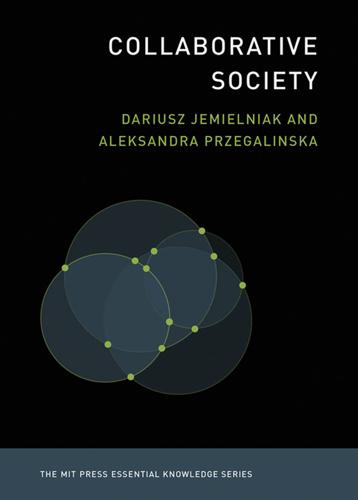
Collaborative Society
by
Dariusz Jemielniak
and
Aleksandra Przegalinska
Published 18 Feb 2020
Schneider, “An Internet of Ownership: Democratic Design for the Online Economy,” Sociology Review 66 no. 9 (2018): 320–340. 44. https://perma.cc/TDF5-C2AK 45. H. Lieberman and C. Fry, “Will Software Ever Work?” Communications of the ACM 44 (2001): 122–124. 46. https://perma.cc/8VFF-S25A 47. https://perma.cc/S3CR-7U5D Further Reading More about collaborative consumption Botsman, R., and R. Rogers. What’s Mine Is Yours: The Rise of Collaborative Consumption. New York: HarperBusiness, 2014. Kostakis, V., and M. Bauwens. Network Society and Future Scenarios for a Collaborative Economy. New York: Springer, 2014. Lessig, L. Remix: Making Art and Commerce Thrive in the Hybrid Economy. New York: Penguin, 2008.
…
This is particularly true when new tech does not impair sociability by supplanting our deeper offline engagement with superficial online engagement, but makes deeper engagement possible in the first place, or complements our existing offline connections.15 Human collaboration enabled by technology can occur in specific contexts such as peer production and collaborative consumption, or more generally through online sharing and exchange platforms. Emerging technologies, thanks to their direct collaboration-enabling features and their engagement of much broader populations, act as super-multipliers for many effects of collaboration that would otherwise be less noticeable.
…
To the developers of ARPANET, sharing knowledge proved more productive than trading information.16 “Sharing” was also understood literally, as the early computer systems were premised on the collaborative use of hardware, and the culture of sending demos and software on floppy drives by mail long preceded online piracy.17 The “hacker ethic,” sparked by joining forces in imaginative ways, foregrounded radical openness, decentralization, and collaboration.18 Most tech developers understood collaboration and peer production broadly, as the heart of the net’s innovative capacities, and viewed encapsulated proprietary networks as limiting them.19 Marcus Felson and Joe L. Spaeth, in their study “Community Structure and Collaborative Consumption,” introduced the term economy of sharing in 1978.20 Today, more than 40 years later, the economy and society continue to rapidly develop and transform. The significant boost in sharing, as both a work- and lifestyle, stemmed from swift improvements in technologies such as social media, mobile technologies, cybercurrencies, and coproduction.

The Sharing Economy: The End of Employment and the Rise of Crowd-Based Capitalism
by
Arun Sundararajan
Published 12 May 2016
Access in hyper consumption is defined by credit, whereas access in collaborative consumption is driven by reputation; choice in hyper consumption is defined by advertising, whereas choice in collaborative consumption is driven by community. Hyper consumption is defined by ownership, collaborative consumption by shared access. As they observe: “The Collaboration at the heart of Collaborative Consumption may be local and face-to-face, or it may use the Internet to connect, combine, form groups, and find something or someone to create ‘many-to-many’ peer-to-peer interactions. Simply put, people are sharing again with their community—be it an office, a neighborhood, an apartment building, a school, or a Facebook network.”13 Botsman and Rogers define collaborative consumption, their preferred term, in accordance with a set of principles that include critical mass, idling capacity (the untapped value of unused or underused assets), belief in the commons, and trust in strangers.
…
A study by Fortune magazine of term usage in the New York Times, the Wall Street Journal, and the Washington Post revealed that “sharing economy” was used five times as frequently as “on-demand economy” and “gig economy” in the first six months of 2015, but that the latter two terms were gaining popularity.12 Before I delve into the intellectual precursors to today’s sharing economy, I’d like to consider the definitions implicit in two influential books that have appeared concurrent with the mainstream emergence of the sharing economy—Rachel Botsman and Roo Rogers’s What’s Mine Is Yours: The Rise of Collaborative Consumption (2010) and Lisa Gansky’s The Mesh (2010)—and look as well at the ideas in Alex Stephany’s more recent book, The Business of Sharing (2015). Botsman and Rogers attempt in their book to lay out what they consider a broad shift in consumption from the 20th century to the 21st. The authors maintain that the 20th century was defined by “hyper consumption,” whereas the 21st century stands to become the century of “collaborative consumption.” Access in hyper consumption is defined by credit, whereas access in collaborative consumption is driven by reputation; choice in hyper consumption is defined by advertising, whereas choice in collaborative consumption is driven by community.
…
Botsman’s Four Quadrants In 2013, Rachel Botsman proposed a framework for organizing the “collaborative economy,” laying out four broad sites of economic activity: collaborative production, collaborative consumption, collaborative finance, and collaborative education.18 Collaborative production is concerned with the design, production, and distribution of goods through collaborative networks. By contrast, collaborative consumption seeks to maximize assets through their shared redistribution. Airbnb and Getaround are good examples. The third category involves collaborative forms of finance, such as Funding Circle and Kiva, or Bitcoin (which enables people to carry out transactions without a traditional third-party intermediary).
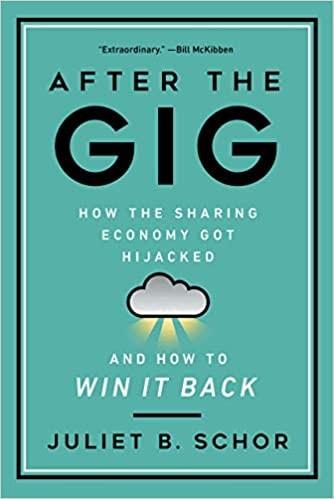
After the Gig: How the Sharing Economy Got Hijacked and How to Win It Back
by
Juliet Schor
,
William Attwood-Charles
and
Mehmet Cansoy
Published 15 Mar 2020
We were among the earliest, if not the earliest, groups to start a formal research program on this sector. Now, after nearly a decade of research, we’ve written this book to share what we’ve learned. Finally, a word about terminology. The earliest branding of the sector was by a management consultant named Rachel Botsman, who called it “collaborative consumption.”25 Within a few years it was rechristened as the less clunky, more evocative “sharing economy.” We also use that term but in a specific way. For us it denotes peer-to-peer sites serving individuals (consumers) in offline exchanges. We include both profits and nonprofits. Nonprofits have been part of the story since the beginning, and to write them out helps foreclose the future that they are working toward.
…
It was also a social project, a chance to remake work and build a humane alternative to global capitalism. Mark, a twenty-five-year-old white management consultant from Boston’s Back Bay neighborhood, was a true believer from the very start. “I first heard about the service while reading Rachel Botsman’s The Rise of Collaborative Consumption [sic] . . . and I thought, ‘Wow, this makes sense.’ . . . I think it is transformative. . . . And I have enjoyed its disruptive power. . . . Right now we’re seeing it in Boston with the new taxi service [Lyft] coming online.” Mark loved all the new services available to him as a consumer.
…
The platform was more convenient than bulletin boards for matching riders and drivers and preferable to Craigslist because it linked users to Facebook, which allowed them to research each other before committing. In 2012 Green and Zimmer started Lyft, which offered short rides in urban areas. The company emphasized its friendliness and adopted the idealist discourse, promising lower carbon emissions and good treatment of drivers. While 2008–9 is generally considered the beginning of collaborative consumption, some platforms were already operating. Couchsurfing began in 1991 after Casey Fenton, needing lodging for a trip to Iceland, hacked into the university database and sent fifteen hundred emails to students asking for a place to stay.25 Craigslist and eBay were founded in 1995 and prefigured key features of later platforms—the peer-to-peer (P2P) structure and ratings systems.26 Other goods exchanges debuted soon after, including Freecycle, a gifting site.

The Zero Marginal Cost Society: The Internet of Things, the Collaborative Commons, and the Eclipse of Capitalism
by
Jeremy Rifkin
Published 31 Mar 2014
I have no doubt that most social entrepreneurs line up in the second category, but are anxious to at least find a responsible way to engage the conventional capitalist system in the newly forming networked Commons. Neal Gorenflo, the cofounder and editor of Shareable magazine, a nonprofit online media publication that reports on new developments in the collaborative consumption economy, notes that while U.S. retail sales in 2011 were $4.7 trillion, collaborative consumption represented nearly $100 billion in turnover that year. Gorenflo asked what retailers can do to leverage their formidable commercial power and quickly take collaborative consumption mainstream.46 Gorenflo outlines a tracking system that would allow a retailer to continue to capture part of the income stream of each item it sold, as it moved from user to user across the sharable economy.
…
When that happens, collaborative production and exchange will scale up from a niche sector to the dominant paradigm and capitalism will be reactive to the Commons, not the other way around. Botsman captures the physiology of the new economic paradigm growing up in our midst. She writes: Every day people are using Collaborative Consumption—traditional sharing, bartering, lending, trading, renting, gifting, and swapping, redefined through technology and peer communities. Collaborative Consumption is enabling people to realize the enormous benefits of access to products and services over ownership, and at the same time save money, space, and time; make new friends; and become active citizens once again. . . .
…
—Vandana Shiva, environmental activist and recipient of the Right Livelihood Award “If you want to understand why we are in the midst of a massive paradigm shift from an age of top-down, centralized institutions to a world of distributed and collaborative power, I would highly recommend reading Jeremy Rifkin’s new book. He clearly joins the dots on how the likes of 3D printing, crowdfunding, and online education platforms are all connected and describes the disruptions that lie just around the corner for most sectors.” —Rachel Botsman, author of What’s Mine is Yours: How Collaborative Consumption Is Changing The Way We Live “Jeremy Rifkin understands that it’s people and communities who are at the heart of the new economic paradigm. People all over the world are building the collaborative economy and Rifkin’s thoughtful analysis further illustrates that this is an idea whose time has come.”
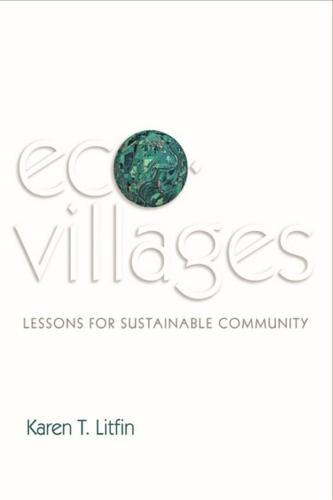
Ecovillages: Lessons for Sustainable Community
by
Karen T. Litfin
Published 16 Dec 2013
When we discover and nourish the mutually enhancing interconnections across these distinctions – and this entails thinking outside the linear industrial model – life becomes very exciting. In the rest of this chapter, I address various ecological aspects of ecovillage life, devoting one section apiece to permaculture, building, energy, water, food, transportation, collaborative consumption, and wildlife conservation. And, because of the integrative character of ecovillage life, we frequently catch glimpses of the other dimensions of E2C2. Box 3.1 The Ecological Footprint A simple tool for measuring our environmental impact is the ecological footprint, an estimate of the amount of land needed to generate the resources and absorb the waste associated with a particular lifestyle.1 These footprints can be expressed both in acres (or hectares) and as the number of Earths a lifestyle would require if every person on Earth lived this way, assuming today’s world population.
…
Still, I respect the decision not to fly that some people are making on ecological grounds, and I see a day when these resources will not be available. Until then, I want to be effective in helping us to make the transition.” Jonathan’s reasoning echoed my own: if I could write a book that would inspire people to transform their lives, then perhaps the jet fuel could be justified. Collaborative consumption A natural consequence of our highly individualized lifestyles is that we have the luxury of making choices without considering who or what might be affected down the road or across the planet. From the constant barrage of advertising to more subtle forms of peer pressure, a host of cultural forces goad us into buying more than we need – indeed, into not even considering what we actually need.
…
The idea is catching on. Sharing and shared ownership networks like GoLoco, NeighborGoods, ZipCar, and CitiBikes are cropping up all over.12 The basic principle is simple: use social networks, especially via cell phones and the internet, to reduce consumption. But I can also envision low-tech forms of collaborative consumption. The transformational neighborhood map comes to mind. If my neighbors and I wanted to green our lives while building a sense of community, our skill-set map might also include whatever we would be willing to share. As our relationships deepened, we might eventually pool our finances and purchase some things together.
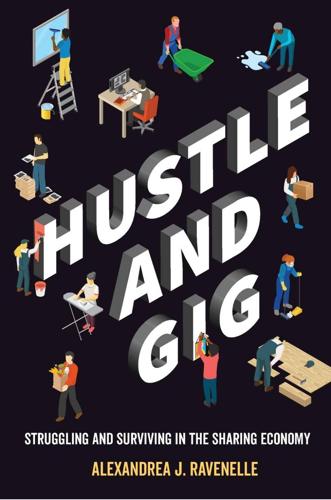
Hustle and Gig: Struggling and Surviving in the Sharing Economy
by
Alexandrea J. Ravenelle
Published 12 Mar 2019
The nation’s savings rate—which exceeded 8 percent of disposable income in 1968—was just 0.4 percent by 2008, according to the Bureau of Economic Analysis.11 There are two general solutions when one’s income doesn’t match expenses: either cut expenses or increase income. The early days of the sharing economy—often described as collaborative consumption—included such free services as Couchsurfing.com and Craigslist, which were viewed as a way to decrease the expenses of consumption. Makerspaces and swaps allowed users access to low-cost or free products. As the sharing economy grew, free services were replaced with fee-based services. Couchsurfing.com was largely usurped by Airbnb.com; clothing swaps were replaced with Tradesy.com, an online designer-clothing reseller marketplace.
…
Much like the tool libraries, most of the free websites that originally comprised the sharing economy are now defunct: Snapgoods, Neighborrow, Crowd Rent, and Share Some Sugar.5 The somewhat better-known Neighborgoods lingers, but only as the pet project of an investor; among its forty-two thousand members, only ten thousand users are active.6 The technological version of the sharing economy, also described interchangeably as connected consumption, collaborative consumption, or the gig economy, is often dated back to the 1995 inventions of Craigslist by Craig Newmark and PayPal by Pierre Omidyar.7 Later contributory organizations included the free hospitality-exchange website couchsurfing.com, founded in 2003. The increased interest in the sharing economy is thought to be fueled by the convergence of three technological advancements: smartphone ubiquity; secure, cashless payment systems; and customer review sites.
…
In this view—and it is not insignificant—the idea of hacking comes from a position of arrogance.”99 Likewise, Silicon Valley’s favorite phrase, “let’s break shit,” is part of Schumpeter’s “creative destruction,” a theory of economic progress in which new business rises like a phoenix from the ashes of old business.100 Creative destruction has also been described as an early version of Clayton Christensen’s hypothesis of “disruptive innovation,” in which economies flourish when start-ups replace established firms.101 And of course, to disrupt the status quo of established industries is part of the goal of the sharing economy. When the term sharing economy first entered the public lexicon, the sharing economy itself looked like a step forward. Instead of having to compete with the Joneses and step onto in the “consumer escalator,” workers could end the cycle of “work and spend” by participating in collaborative consumption in which expensive products, like riding lawn mowers, were shared with the community.102 By spending less money, workers could minimize their financial needs and increase their leisure time, spending more time with family and friends and reducing the growing trend of “bowling alone.”103 Sharing would replace spending in a newly collaborative world and further reduce the McDonaldization of everything.104 The sharing economy was a step forward, a way out, a solution to corporate dependency and workers’ loss of workplace autonomy.

Exponential Organizations: Why New Organizations Are Ten Times Better, Faster, and Cheaper Than Yours (And What to Do About It)
by
Salim Ismail
and
Yuri van Geest
Published 17 Oct 2014
Just as Waze piggybacked off its users’ smartphones, Uber, Lyft, BlaBlaCar and Sidecar leverage under-utilized cars. (If you own a car, it sits empty about 93 percent of the time.) The latest wave of non-asset businesses is something called Collaborative Consumption, a concept evangelized by Rachel Botsman and Roo Rogers in their book, What’s Mine is Yours: The Rise of Collaborative Consumption. The book pushes the sharing philosophy forward by establishing information-enabled assets of all kinds, from textbooks to gardening tools to housing—assets and resources that are abundant and widely available. Research conducted by Crowd Companies in April 2014 highlights the industries in which seventy-seven of the largest organizations in this new economy operate.
…
But remember: every industry is becoming information-based, either by being digitized or by using information to identify under-utilized assets (e.g., collaborative consumptions). With Airbnb, for example, the marginal cost of a new room to rent is essentially zero. Not so for Hyatt or Hilton. A key reason for this drop in marginal cost is that there is (relative) abundance of supply. As shown in their book Abundance, Peter Diamandis and Steven Kotler argue that as technology brings us a world of abundance, access will triumph over ownership. By comparison, scarcity of supply or resources tends to keep costs high and stimulates ownership over access. Today, a trend known as Collaborative Consumption leverages the Internet and social networks to create a more efficient utilization of physical assets.
…
A comparable transformation is taking place with biotech equipment. BioCurious, another Silicon Valley invention, is an open wetlab where enthusiasts take courses, use centrifuges and test tubes, and synthesize DNA. Genspace offers a similar resource in New York City. This rent-not-own philosophy further extends the current craze of collaborative consumption and the sharing economy. There’s less and less need to own a factory, a laboratory or even a scientific tool. Instead, why not rent those assets, reducing up-front investment and leaving the ownership and maintenance of state-of-the-art facilities to someone else? Further, given that the control mechanisms offered by software and the Internet allow the management of these capabilities at a distance, why build your own?
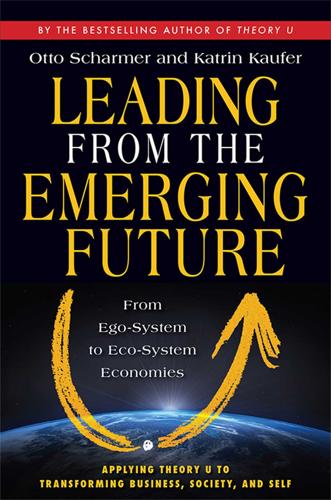
Leading From the Emerging Future: From Ego-System to Eco-System Economies
by
Otto Scharmer
and
Katrin Kaufer
Published 14 Apr 2013
Mark Levine, “Share My Ride,” New York Times Magazine, March 5, 2009, www.nytimes.com/2009/03/08/magazine/08Zipcar-t.html?pagewanted=all&_r=0 (accessed December 15, 2012). 74. Rachel Botsman, presentation at TEDx Sydney, May 2010, www.ted.com/talks/rachel_botsman_the_case_for_collaborative_consumption.html (accessed December 15, 2012). 75. Rachel Botsman and Roo Rogers, What’s Mine Is Yours: The Rise of Collaborative Consumption (New York: HarperBusiness, 2010). 76. Kerstin Bund, “Käufer werden Nutzer,” interview with Robert Henrich, Die Zeit 51, December 15, 2011, www.zeit.de/2011/51/Car2go-Carsharing-Daimler (accessed February 26, 2013). 77. Vincent Graff, “Carrots in the Car Park.
…
The result is decisions and outcomes that benefit the whole system, not just a part of it. A close look at today’s economies and societies reveals an awakening of eco-system awareness in numerous arenas. For example, the movements for Slow Food, conscious consuming, fair trade, LOHAS (Lifestyles of Health and Sustainability), socially responsible investing, and collaborative consumption are all extending their reach to include the concerns of others in the economic process. They can be seen as forerunners of the 4.0 state of the economy. One Map, Many Journeys The previous section introduced the developmental map. But the map is not the journey or the territory. The journey differs according to the historical context for each country and civilization.
…
And they include the Fair Trade Movement, which was started in the early 1980s by conscious consumers around the world concerned about the well-being of people and the planet. That movement has changed business practices in many industries and continues today in various forms of conscious, collaborative consumption that we will discuss in more detail below. In all these examples, we see a similar theme: Consumers have begun to extend their awareness of the ego-system (the well-being of oneself) to the eco-system (the well-being of all). Individuals are aware of the impact that their purchasing decisions have on producer communities that may be thousands of miles away.

Utopia Is Creepy: And Other Provocations
by
Nicholas Carr
Published 5 Sep 2016
We are at a moment of transition from “the twentieth century of hyper-consumption,” when “we were defined by credit, advertising, and what we owned,” to “the twenty-first century of Collaborative Consumption,” when “we will be defined by reputation, by community, and by what we can access and how we share and what we give away.” But, having raised the specter of an anticonsumerist insurrection, Botsman and Rogers immediately defuse it. Like Johnson, they turn out to be more interested in the way online sharing feeds into profit-making ventures. “Perhaps what is most exciting about Collaborative Consumption,” they write, with charming naiveté, “is that it fulfills the hardened expectations on both sides of the socialist and capitalist ideological spectrum without being an ideology in itself.”
…
“Perhaps what is most exciting about Collaborative Consumption,” they write, with charming naiveté, “is that it fulfills the hardened expectations on both sides of the socialist and capitalist ideological spectrum without being an ideology in itself.” In fact, “for the most part, the people participating in Collaborative Consumption are not Pollyannaish do-gooders and still very much believe in the principles of capitalist markets and self-interest. . . . Collaborative Consumption is by no means antibusiness, antiproduct or anticonsumer.” Whew! Botsman and Rogers are more interested in co-opting anticonsumerist energies than unleashing them. A similar tension, between revolutionary rhetoric and counterrevolutionary message, runs through the popular “wikinomics” writings of consultants Don Tapscott and Anthony Williams.
…
There’s nothing wrong with that view, I suppose—these are all writers who court business audiences—but their writings do testify to just how far we’ve come from the idealism of the early days of cyberspace. Back then, online communities were proudly anticommercial, and the net’s free exchanges stood in opposition to what John Perry Barlow, in his “Declaration of the Independence of Cyberspace,” dismissively termed “the Industrial World.” By encouraging us to think of sharing as Collaborative Consumption, the technologies of the web now look like they will have, as their true legacy, the spread of market forces into the most intimate spheres of life. THE QUALITY OF ALLUSION IS NOT GOOGLE January 15, 2011 ADAM KIRSCH, THE USUALLY deft critic, goes agley in a new Wall Street Journal column, “Literary Allusion in the Age of Google.”
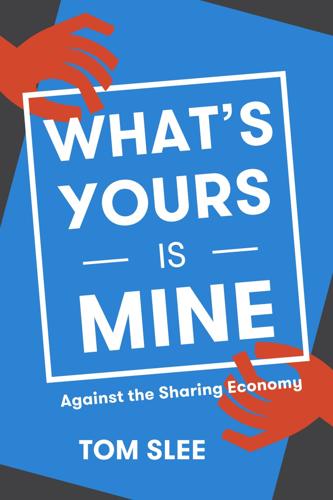
What's Yours Is Mine: Against the Sharing Economy
by
Tom Slee
Published 18 Nov 2015
It suggests exchanges that do not involve money, or that are at least motivated by generosity, by a desire to give or to help. “Economy” suggests market transactions—the self-interested exchange of money for goods or services. There has been a lot of debate about whether “sharing economy” is the right name to use to describe this new wave of businesses, and a raft of other names have been tried out—collaborative consumption, the mesh economy, peer-to-peer platforms, the gig economy, concierge services, or, increasingly, the “on-demand economy.” There is no doubt that the word “sharing” has been stretched beyond reasonable limits as the “sharing economy” has grown and changed, but we still need a name when we talk about the phenomenon.
…
Just as the story of Airbnb is featured in Rachel Botsman and Roo Rogers’ What’s Mine Is Yours, Zipcar takes the pole position in Lisa Gansky’s 2010 book The Mesh: Why the Future of Business is Sharing.2 Zipcar was never a peer-to-peer company, as the cars were all owned by the company, but it was a form of shared or collaborative consumption based on digital technology: Gansky quotes Chase as saying, once Danielson described a Berlin car-sharing service to her, “A lightbulb went off in my head. I thought: This was what the Internet was made for.” Perhaps even more than Airbnb, Zipcar became the original Sharing Economy company.
…
Booth, Robert. “Uber Whistleblower Exposes Breach in Driver-Approval Process.” The Guardian, June 15, 2015. http://www.theguardian.com/technology/2015/jun/12/uber-whistleblower-exposes-breach-driver-approval-process. Botsman, Rachel. “Collaborative Finance: By the People, For the People.” Collaborative Consumption, July 31, 2014. http://www.collaborativeconsumption.com/2014/ 07/31/collaborative-finance-by-the-people-for-the-people/. ———. “The Sharing Economy Lacks A Shared Definition.” Co.Exist, November 21, 2013. http://www.fastcoexist.com/3022028/the-sharing-economy-lacks-a-shared-definition. ———.

Frugal Innovation: How to Do Better With Less
by
Jaideep Prabhu Navi Radjou
Published 15 Feb 2015
This grassroots shift from an ownership-based consumer economy to a sharing society is propelling the growth of a peer-to-peer economic model based on frugality that involves sharing, bartering, swapping, renting or trading. Collaborative consumers do not covet the latest and fanciest products; they prefer good-enough solutions that meet basic needs. Collaborative consumption, a concept popularised by Rachel Botsman in her book What’s Mine Is Yours, threatens to disrupt many industries. In 2013, more people used BlaBlaCar, a leading European car-sharing service, than travelled by the high-speed Eurostar train between London and Paris.8 Airbnb now rents more room nights annually than Hilton’s entire hotel chain does globally.
…
During any particular lifetime, however, the product is most likely to be owned and used by just one customer. But what if, during even a single lifetime or incarnation, the same product could be consumed by many users? Then the same inputs could be made to create greater value for more and more users. That is the underlying premise of the sharing economy – also known as collaborative consumption – in which participants aspire to share access to goods and services rather than to have individual ownership. Sharing economy firms include Airbnb (sharing homes), RelayRides, BlaBlaCar and easyCar (sharing cars), ParkatmyHouse (sharing parking spaces), BringBee (sharing trips to the grocery store), Wishi or Wear It Share It (choosing clothes), Eatwith (sharing your dinner), yerdle.com (sharing household equipment with neighbours), Skillshare (sharing skills and knowledge) and TaskRabbit (outsourcing small jobs and errands).
…
The 2014 Sustainable Living Plan reports progress against its targets including “48% of agricultural raw materials from sustainable sources, up from 14% in 2010” and success in helping “303 million people improve their health and well-being through Lifebuoy, Signal, Pureit and Dove brands, up from 52 million in 2010”. Conclusion A few pioneering Western firms are making sustainability a strategic objective. New approaches such as cradle-to-cradle and collaborative consumption are both causes and consequences of this shift; and these trends will drive the frugal innovation revolution in the West. Unilever, Marks & Spencer and Kingfisher have made impressive progress in reducing their environmental footprint, but they face another big challenge in extending sustainability to consumers.
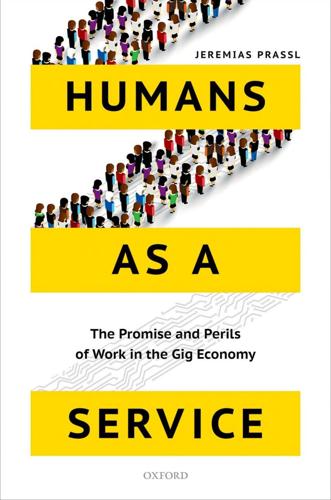
Humans as a Service: The Promise and Perils of Work in the Gig Economy
by
Jeremias Prassl
Published 7 May 2018
They are at the van- guard of what is often called the ‘gig economy’, evoking the artist’s life in which each concert, or ‘gig’, is but a one-off task or transaction, without further commitments on either side.2 The rise of these companies has been meteoric—and is surrounded by intense public debate. Contradictions abound. To some, the ‘Uber economy’ is merely the latest instantiation of ‘runaway capitalism . . . screwing’ the workers;3 to others, ‘collaborative consumption’ is key to a fundamental improvement in our working lives.4 Journalists, regulators, and academics have quickly * * * Humans as a Service 3 become interested in the gig economy. Most agree that we are witnessing a revolution—whilst bitterly contesting its nature. On the one hand, there are those who enthusiastically promote the gig economy as nothing less than a fundamental reinvention of labour markets, weaving ‘a fascinating tapestry of innovation, one that provides an early glimpse of what capitalist societies might evolve into over the coming decades’5—a story of platforms facilitating ‘the exchange of goods, services, or social currency, thereby enabling value creation for all participants’.6 Vociferous critics, on the other hand, castigate gig platforms for extend- ing ‘a harsh and deregulated free market into previously protected areas of our lives’,7 thus: forging an economic system in which those with money will be able to use faceless, anonymous interactions via brokerage websites and mobile apps to hire those without money by forcing an online bidding war to see who will charge the least for their labor.8 Humans as a Service Back in 2006, Jeff Bezos had no such qualms.
…
Language is a crucial ingredient in shaping our understanding of on-demand work—casting platforms as community actors, rather than economic oper- ators, and rebranding employment as freelance entrepreneurship. Peers, Neighbours, Friends In the early days of the gig economy, observers were faced with a discourse of ‘collaborative consumption’,37 peer-to-peer sharing, and neighbours helping neighbours: ‘Rideshare with Lyft. Lyft is your friend with a car, whenever you need one.’38 The persistence with which work in the on- demand economy has been labelled as anything but work—or even recog- nizable economic activity—is astonishing, with at least one US delivery platform taking this trend to its logical extreme and referring to its product as ‘Favors’, delivered by ‘Runners’, who are enticed to be ‘Heroes’.39 By ‘rebranding . . . labor as a kind of good-will effort toward others, rather than an old-fashioned exchange of work for remuneration’,40 on-demand platforms are hoping to avoid the regulatory obligations that most jurisdic- tions impose on ordinary employers and on businesses generally.
…
In between can be found a vast array of occupational categories including teachers, cooks, tree surgeons, hairdress- ers, translators and film editors. 3. Steven Hill, Raw Deal: How the ‘Uber Economy’ and Runaway Capitalism Are Screwing American Workers (St Martin’s Press 2015). 4. Rachel Botsman and Roo Rogers, What’s Mine Is Yours: The Rise of Collaborative Consumption (Collins 2011). 5. Arun Sundararajan, The Sharing Economy: The End of Employment and the Rise of Crowd-Based Capitalism (MIT Press 2016), 19. 6. Sangeet Paul Choudary, Geoffrey G. Parker, and Marshall W. Van Alstyne, Platform Revolution: How Networked Markets Are Transforming the Economy and How to Make Them Work for You (Norton & Co. 2016), 5
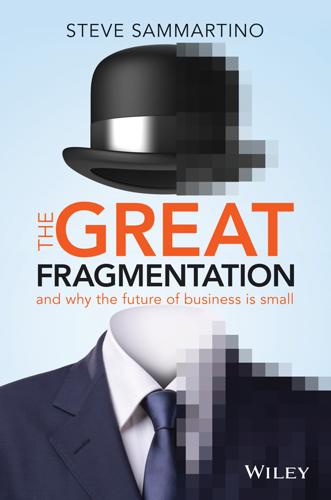
The Great Fragmentation: And Why the Future of All Business Is Small
by
Steve Sammartino
Published 25 Jun 2014
The first phase of his ‘adult' career was in marketing, working his way into senior executive roles in global consumer goods companies and advertising agencies. He escaped his cubicle for the first time in 2005 and went on to found rentoid.com — a peer-to-peer renting portal that became a leader in the collaborative consumption movement. After a successful exit he embarked on a number of crazy side projects including putting a Lego space shuttle into actual orbit, building a jet-powered bicycle, and crowdfunding the build of a full-size Lego car that runs on air and uses an engine made of Lego — all to prove what's possible in a connected world with low cost technology.
…
It’s not just the sellers who are being inconvenienced by the shift from owning to accessing, it’s all sorts of hiring businesses. Traditional business that played in the temporary access space, as well as those in the hiring and rental area (such as accommodation and cars) are also being significantly disrupted by this shift. The collaborative consumption movement means that buying is a choice rather than a necessity. We can rent cars by increments of hours now and have all the benefits of a private car on demand without the excessive cost of hiring or owning one. This is pretty significant given that the average motor vehicle spends more than 90 per cent of its available life idle in a car space.
…
It’s much cooler to tweet photos of the organic Ethiopian cuisine we’re just about to have for lunch from some newly emerging inner-city suburb eatery than a flash restaurant because it’s ‘real’. Today, the having is in the doing, not the owning. Having and owning is fake; doing and experiencing is real. We’ve seen one of the top-10 trends globally on the web as collaborative consumption (discussed in chapter 8) because it connects us and makes things real. We’re no longer outsourcing our joy to buying things, but gaining joy from experiencing events. For gaming to get to a permanent and commercial level it needs to do the same thing; that is, be about the events and activities we partake in.
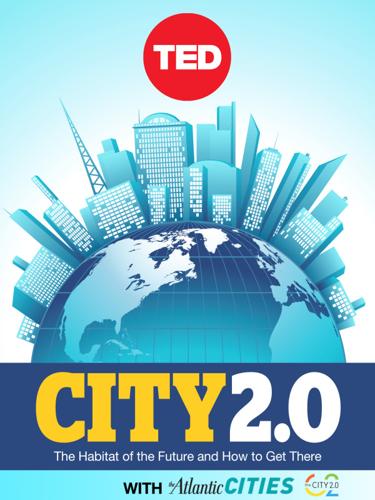
City 2.0: The Habitat of the Future and How to Get There
by
Ted Books
Published 20 Feb 2013
A Seattle resident gets around with the car sharing service Car2go. Image: Courtesy of Car2go Share everything Collaborative consumption arises from urbanization, and it’s here to stay By Emily Badger, the Atlantic Cities The “equipment library” at Union Kitchen in Northeast Washington, D.C., contains some of the more mundane artifacts of the modern “sharing economy”: an oversized whisk, a set of spatulas, ladles, chopping knives, sheet pans, and tongs. “Collaborative consumption,” as this cultural phenomenon is also known, is more often associated with the big-ticket items that have given the concept such bemusing cachet.

50 Future Ideas You Really Need to Know
by
Richard Watson
Published 5 Nov 2013
The dustbins don’t fill up as fast and there’s always enough hot water for a bath. But is living alone healthy for the planet? In the future, people who live alone might have to pay higher taxes, because doing so means more housing, household appliances and cars. Or will they find new ways of sharing resources through collaborative consumption? Single-person future So what are some of the other implications of a world where more people live on their own? One area affected is retail. Increased numbers of single-person households, especially in inner-city areas, mean that value and convenience are usually more important than choice.
…
One mundane, but nevertheless prophetic, example is that items such as chicken breasts can now be bought in packs of one in urban supermarkets rather than just in packs of two, four or six. This could be a profitable area for retailers because the margins on single-serve packs are often greater than on larger packs. Another is collaborative consumption, where people share resources because it’s cheaper than each individual owning, say, a car. Another implication may be health. A Danish study found that older people who live alone have a greater risk of a sudden heart episode than those living with others. It’s a danger for men over 50, but not so much for women until they hit 60; but for both sexes, living alone after this age can double the risk of a heart episode.
…
Your problem is mine Open innovation, an idea originally pioneered by the open-source software community, has the potential to radically change how and where our problems are solved. In one sense the wisdom of crowds is no different from old-fashioned suggestion boxes, but the big difference is scale and to some extent speed. With enough networked minds, all problems become shallow. Linked to this idea is another, namely collaborative consumption. This is the use of connecting technologies to allow people to share and exchange all kinds of physical and digital goods, services, assets and skills. Media is an example. Once it was narrowly broadcast and tightly controlled by a few for the many. There wasn’t much democracy, but it was a communal experience.

Masters of Management: How the Business Gurus and Their Ideas Have Changed the World—for Better and for Worse
by
Adrian Wooldridge
Published 29 Nov 2011
Zipcar and Netflix are harnessing a combination of new technology and the zeitgeist (“Sharing is clean, crisp, urbane, postmodern,” says the New York Times’s Mark Levine. “Owning is dull, selfish, timid, backward.”) to pioneer a new model of collaborative consumption.13 Zipcar made $130 million in profits in 2009, a year in which car sales fell by 40 percent, and Netflix made $359.6 million. Bag Borrow or Steal allows you to rent a glamorous purse. TechShop, in Menlo Park, California, rents “tinkering space” and equipment to thousands of inventors, hobbyists, and fanatics. Other pioneers of “collaborative consumption” have gone further, dispensing with the idea of buying inventories of their own and contenting themselves with the role of brokers.
…
See also Leaders factories for, 377 Child and Family Wellness Shops, 223–224 Child care, 360 China entrepreneurs and, 184–186 innovation in, 213–214 The China Strategy (Tse), 64 Chinese Academy of Sciences, 373 Chinese European Business School (CEIBS), 55–56, 59 Chinese Federation for Corporate Social Responsibility, 33 Chongquing Lifan Group, 224 Christensen, Clayton, 53, 227, 234–235, 248, 328–329, 392, 398–400 Chrysler, 299 Chubby Hubby, 247 Churchill, Winston, 362 Cisco Systems, 62, 147–148, 155, 161, 205, 228, 403 Cisneros, Henry, 320 Citibank, 152 Citigroup, 43, 59 Citigroup Global Services, 221–222 Clifford, Trish Gorman, 55 Clinton, Bill, 116, 125, 126, 319–320 Clinton, Hillary, 340 Cloud computing, 188 CNN, 104 Coca-Cola, 36, 40, 271 Co-creation, 240 Cognitive Surplus (Shirky), 68 Cohen, Ben, 195 Coke, Sir Edward, 34 Colao, Vittoria, 310 “Collaborative consumption,” 156 “Collaborative production,” 156–157 Collins, Jim, 53, 112, 162, 262, 288, 289, 310 Colman, Alan, 372–373 Colvin, Geoff, 365 Communism, 277–278 The Communist Manifesto (Marx and Engels), 347 Companies Act (2006), 33 Compensation “1/2 by 2 by 3” rule, 338 for executives, 299–303 of MBAs, 60–61 performance-related, 324 Competing for the Future (Prahalad and Hamel), 234, 258 Competing on the Edge: Strategy as Structured Chaos (S.
…
The best example of nostalgia is Sampson, Company Man: The Rise and Fall of Corporate Life (New York: Random House, 1996). 12. Farok Contractor, Vikas Kumar, Sumit Kundu, and Torben Pedersen, Global Outsourcing and Offshoring (Cambridge: Cambridge University Press, 2011), p. 31. 13. Rachel Botsman and Roo Rogers, What’s Mine Is Yours: The Rise of Collaborative Consumption (New York: HarperBusiness, 2010); Lisa Gansky, The Mesh: Why the Future of Business Is Sharing (New York: Portfolio/Penguin, 2010). 14. Charlene Li and Joseph Bernoff, Groundswell: Winning in a World Transformed by Social Technologies (Boston, Mass.: Harvard Business Press, 2008), pp. 7–8. 15.
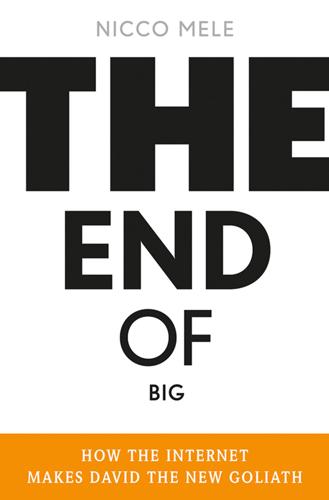
The End of Big: How the Internet Makes David the New Goliath
by
Nicco Mele
Published 14 Apr 2013
Christopher Steiner, $20 per Gallon: How the Inevitable Rise in the Price of Gasoline Will Change Our Lives for the Better (New York: Hachette Book Group, 2009), 141. 38. http://www.npr.org/templates/story/story.php?storyId=129151987 39. Rachel Botsman, Roo Rogers, What’s Mine Is Yours: The Rise of Collaborative Consumption (New York: HarperBusiness, 2010), xx 40. http://www.fastcompany.com/1747551/sharing-economy 41. Rachel Botsman and Roo Rogers, introduction, What’s Mine Is Yours: The Rise of Collaborative Consumption (New York: HarperCollins, 2010), xvii. 42. http://www.rollingstone.com/politics/news/global-warmings-terrifying-new-math-20120719 9. Big Opportunities 1. Eamon Grennan, “Could This Be It?”
…
As two observers have remarked, “The convergence of social networks, a renewed belief in the importance of community, pressing environmental concerns, and cost consciousness are moving us away from the old top-heavy, centralized, and controlled forms of consumerism toward one of sharing, aggregation, openness, and cooperation.”39 Lisa Gansky, one of the pioneer entrepreneurs of the digital eye calls this new economy “the Mesh” because of its networked enabled efficiency. Collaborative consumption might sound idealistic, but it isn’t a passing fad. According to Fast Company, a whole “new generation of businesses” is emerging that enables “the sharing of cars, clothes, couches, apartments, tools, meals, and even skills. The basic characteristic of these you-name-it sharing marketplaces is that they extract value out of the stuff we already have.”40 Three million people so far have used shared consumption sites to rent space on peoples’ couches, and over two million have used them to share bikes.
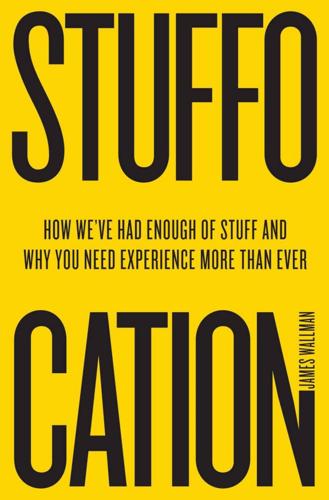
Stuffocation
by
James Wallman
Published 6 Dec 2013
Moreover, the experience economy should not feel like hopeful idealism because, even though it is still unevenly distributed, there are many signs that it is already happening. Consider, for instance, the rise of experiential events, e-books, TOMS shoes, the Common Threads Initiative, Puma’s Clever Little Shopper, collaborative consumption, the runaway success of Apple, and why London is one of the most visited cities in the world. These are stellar examples, the pioneers, if you like, of the experience economy. Here is why. As someone who has made the shift to reading on a digital device, you already know how e-books help solve the problem of Stuffocation: fewer trees cut down, lower carbon footprint, instant access so no need to actually go to the shops, and, best of all, fewer books cluttering up the house or your bag or your suitcase when you go on holiday.
…
Put the brand’s Clever Little Shopper bag in hot water for three minutes and it harmlessly dissolves, so you can pour it safely down the plug. The social accommodation brand Airbnb, the car-sharing service Zipcar and music-streaming site Spotify are all examples of what is variously known, from slightly different angles, as the new trend for dis-ownership, the sharing economy and collaborative consumption. Now, thanks to these trends and the technologies that make them possible, you can enjoy the experience of a room, a house, a car, a CD, a handbag, a lawnmower, a musical instrument or even a dog – without all the hassle that comes with owning them. The success of Zipcar, for instance, reflects the space and cost that comes with keeping a car in a city, and the fact that, if you live in a city, you just do not need a car so much anymore.
…
“Rather than owning a thing”: millennials not so interested in material objects Various sources, including Tammy Erickson, “Meaning Is the New Money”, HBR Blog Network, 23 March 2011; and David Brooks, “The Experience Economy”, New York Times, 14 February 2011. The rise of services like Zipcar, Spotify, and Netflix For excellent introductions to how these companies operate, read Rachel Botsman and Roo Rogers, “Beyond Zipcar: Collaborative Consumption”, Harvard Business Review, October 2010; and, for the rise of these services, read “All Eyes on the Sharing Economy”, The Economist, 9 Mar 2013. CHAPTER ELEVEN Are You Experienced? Your Government Wants to Know This chapter is informed by many sources, including Roger Cohen, “The Happynomics of Life”, New York Times, 12 March 2011; Richard Layard, Happiness: Lessons from a New Science (London: Penguin, 2011).
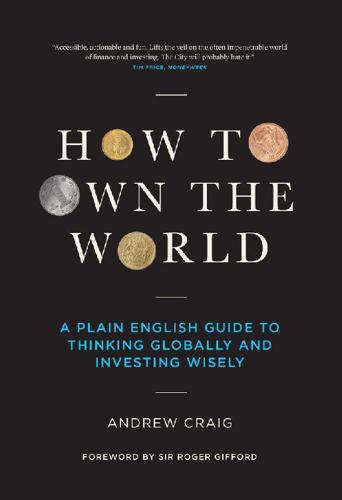
How to Own the World: A Plain English Guide to Thinking Globally and Investing Wisely
by
Andrew Craig
Published 6 Sep 2015
Zipcar estimates that each of their vehicles takes at least twenty personally owned vehicles off the road, and the research group Laffer Associates estimates that car sharing could halve the sale of cars in the US by 2020. As the Zipcar model is replicated across an increasingly urbanised world, growth in such companies will contribute to increasing GDP numbers and benefitting the environment at the same time. Advances in IT systems will hopefully facilitate the development of these “collaborative consumption” business models across a wide range of human activities. There have certainly been plenty of compelling recent examples of this phenomenon, perhaps the best known of which are Uber and Airbnb, revolutionising urban travel and the hotel industry respectively. These sorts of developments give me more confidence than ever that human ingenuity and scientific breakthroughs will enable the whole world to grow economically without destroying our planet.
…
I would highlight a few in particular: The Rational Optimist: How Prosperity Evolves by Matt Ridley; Abundance: The Future Is Better Than You Think by Peter Diamandis and Steven Kotler; The Sixth Wave: How to Succeed in a Resource-Limited World by James Bradfield Moody and Bianca Nogrady; and What’s Mine is Yours: The Rise of Collaborative Consumption by Rachel Botsman and Roo Rogers. SO, WHAT CAN I DO? Despite what many of us in the West feel, the world is still growing and will likely continue to do so. People in the developing world will get relatively richer and people in developed nations may continue to get relatively poorer.
…
The Trouble with Europe: Why the EU Isn’t Working, How It Can Be Reformed, What Could Take Its Place. Nicholas Brealey Publishing, 2015. Borthwick, Mark. Pacific Century: The Emergence of Modern Pacific Asia. Boulder: Westview, 2007. Botsman, Rachel, and Roo Rogers. What’s Mine Is Yours: The Rise of Collaborative Consumption. New York: Harper Business, 2010. Print. Bower, Tom. The Squeeze: Oil, Money and Greed in the 21st Century. London: HarperPress, 2009. Bradfield-Moody, James, and Bianca Nogrady. The Sixth Wave. London: ReadHowYouWant.com, 2010. Browne, Harry. Fail-safe Investing: Lifelong Financial Security in 30 Minutes.
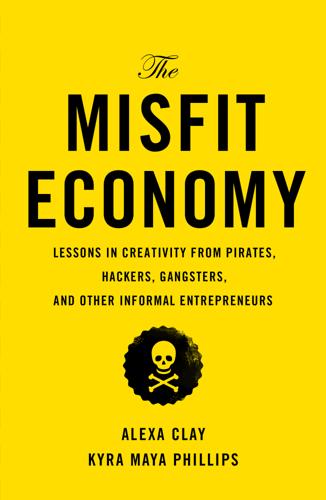
The Misfit Economy: Lessons in Creativity From Pirates, Hackers, Gangsters and Other Informal Entrepreneurs
by
Alexa Clay
and
Kyra Maya Phillips
Published 23 Jun 2015
At the same time, Internet-based platforms—so-called time banks—have allowed Spaniards to exchange services, skills, knowledge, and trades. These platforms permit unemployed and underemployed individuals to exchange what they do have for goods and services that they need. This trend toward “collaborative consumption” is taking place worldwide. As Rachel Botsman and Roo Rogers chronicle in their book, What’s Mine Is Yours, sharing, trading, and selling idle items, time, and services is a rising trend. From Airbnb (a rental website that has gone from 120,000 listings in early 2012 to over 300,000 at the time of this writing) to Zipcar (the car-sharing service that was sold to Avis for $500 million in January 2013), people the world over are moving away from the fixed, formal “own it” model to a more fluid “exchange it” approach.
…
Aaron, Baillie, 62–63 Abdi (Somali pirate), 13 Abdul-Wahab, Walid, 7–10, 11, 72, 73–75 Accenture, 161–69, 202, 214 Accenture Development Partnerships (ADP), 166–68 Aera Energy, 90 Afweyne (“Big Mouth”) (Somali pirate), 14–15 Agency for International Development, U.S., 200 Airbnb, 65, 83, 124 airline industry, copying in, 84–85 Alando, 84 alien abduction, 187–92 Allen, Robert C., 88–89 Almighty Latin King Nation (ALKN), 170, 171 Al Qaeda, 124 Amazon Basin, 180–84, 200, 209 American Express, 85 Amish, 3–4, 6, 9, 74 Anderson, Sherwood, 212 Anonymous, 111, 112 Anti Hacker Toolkit, The, 109 Apollo 11, 149 Apple, 30, 64, 81 Apte, Mandar, 204–5, 206 Ariel School, 188 Armstrong, Neil, 149 Arreguín-Toft, Ivan, 123 Asimov, Isaac, 149 ASOS, 85 Asperger’s syndrome, 36 attention deficit disorder (ADD), 36 Austen, Jane, 143 autism, 36 camel milk and, 5, 74 automobile industry, 39, 40–43 copying in, 78–79 hacking of, 124 success of, 39, 41–42 Bachmann, Michel, 184 Bahadur, Jay, 28–29 Bali, 184 Balkans, 162, 165, 168, 169 bartering, 65 Battle of the Overpass, 40 Battlestar Galactica, 147 Beach, Sylvia, 212, 213 Beck Hansen’s Song Reader, 98 Beijing, China, 81 Ben & Jerry’s, 200, 201 Ben-Atar, Doron S., 79 Berdish, David, 40–43, 202, 205–6 Berlin, Germany, 83, 221 Bichlbaum, Andy, 153–55 Black Panthers, 173 Black Rock City, Nev., 156 blast furnace industry, 88 Bloomberg, Michael, 63 Body Shop, 201 Bonanno, Mike, 153, 154–55 Borderland, 156 Borenstein, Nathaniel, 92 Boston, Mass., 62, 80–81 Boston Globe, 80–81 Botsman, Rachel, 65 Boulevard Raspail, 213 Boulton, Matthew, 89 Bountra, Chas, 101–2, 204 Brand, Stewart, 141 Branson, Richard, 30, 31–32, 34 Brazil, 94, 95–96, 99, 181, 199–200, 215–16 Brazil House of Representatives, 95 Brooklyn Joe Painters, 61 Brown University, 180, 181 buccaneers, 118 Bulloch, Gib, 161–69, 179, 184, 192, 202, 214 Burning Man, 149, 156 BYD, 78, 79 Callimanopulos, Dominique, 188, 191 camel milk, 4–10 health benefits of, 5, 73–74 Middle East and, 5, 7–8 raw form of, 5, 6, 7, 9 retail business of, 7, 9 selling of, 6–7, 9 U.S. industry of, 5–7, 8, 9, 72, 74–75 camels, 4–5, 6 milking of, 3, 4, 6, 8 in United States, 7, 72–73 Camp Grounded, 185 Canada, 80 Cannes Film Festival, 152 capitalism, 56–57 Cartegena, William (“Lil Man”), 171 Carter, Troy, 90 Chanel, Coco, 143 Chicago, Ill., 131–33, 170 China, 77–79, 81–82, 102–3 cholera, 128 Chongqing, China, 81 Chungking Mansions, 82, 83 Church of Scientology, 111 “Cinco de Mayo” competition, 56 civic consciousness, 173–78 civil rights, 115, 176 Civil War, U.S., 73 Clay, Alexa, 197, 220 Clay, Jason, 197–203, 204, 210 Coachella, 156 Coca-Cola, 91, 198 Coffin, Alice, 152–53 Cohen, Ben, 200 Coleman, Gabriella, 111 collaborative consumption, 65 collaborative innovation, 86, 88–91, 93, 98–102, 105 Colton, Charles Caleb, 80 common councils, 119 community building, 67–72 Community Links, 66 Congress, U.S., 73, 113 contraception, 21 Coppola, Francis, 32 Copycats (Shenkar), 83–84 copying, 77–106 in airline industry, 84–85 in automobile industry, 78–79 benefits of, 85–87, 94, 98–102 of business models, 83–85 in China, 77–79, 81–82, 102–3 collaborative innovation and, 86, 98–102, 105 collective invention and, 88–91 downloading and, 96–98 etiquette of, 103, 105 innovation fostered by, 85, 94, 96–98, 105 intellectual property law and, 79, 80 intellectual property theft and, 77, 85, 93, 105 in music industry, 90 open-source and, 99, 102–3 patents and, 91–93 in pharmaceutical industry, 94–95 research and development and, 88–89, 91, 101–2 timing and, 102–5 see also counterfeit goods; shanzhai Copyleft, 100 Cornell University, 199 Cornwall, England, 89 corporate sabotage, 154 corporations, 39 innovation in, 167 patents and, 92, 93 Costa Rica, 180 counterfeit goods, 82 food as, 80–81 global trade of, 81 Coursera, 23 Cowan, Matt, 84 Creative Commons, 113 Crick, Francis, 86 Cruise, Tom, 111 Cuban, Mark, 91 Cultural Survival, 200, 201 Culture Club, 31 Cure Violence, 131–35, 207 Dallas Buyers Club, 8 Darwin, Charles, 86–87 Davis, Jefferson, 73 Defy Ventures, 55–56, 58, 60–62, 64, 207–8, 209 Demand Progress, 113 DemoHour, 102 de Pree, Maggie, 220 Dershowitz, Alan, 190 Desert Farms, 7, 9, 72, 74 development industry, 161–69 DHL, 67, 69 Dickens, Charles, 80 digital photography, 104–5 Diners Club, 85 Disney, 97 Doctorow, Cory, 149 “Does Entrepreneurship Pay?
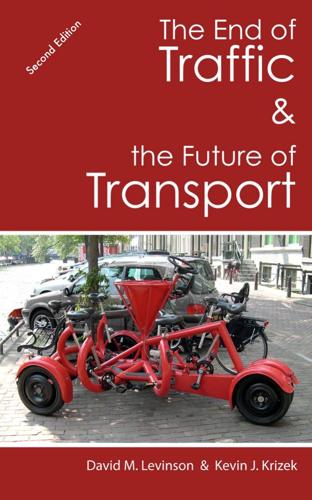
The End of Traffic and the Future of Transport: Second Edition
by
David Levinson
and
Kevin Krizek
Published 17 Aug 2015
But big (and real-time) data creates marketable assets from under-used possessions. People still need physical things (those things comprised of atoms), but increasingly they demand virtual things (composed of bits, as described earlier). Either way, both are increasingly shared. Dubbed collaborative consumption, the basic idea is that things can be shared rather than individually owned (e.g., one rents hotel rooms and cars rather than buying condos and vehicles when on travel; it is now common to rent music, videos, and books). Previously cars, taxis, and hotel rooms were rented from companies which could achieve large economies of scale.
…
The Future of Sharing: Cloud Commuting For communities where densities are relatively low, incomes high, and thus taxis scarce, the most reliable strategy for timely point-to-point transport is for people to maintain personal transport close at hand. Cars and bikes, which they own, are parked at their homes, workplaces, or other destinations. But with more widespread use of information technologies, ownership and possession are no longer necessary prerequisites for on-demand mobility. Widely called the 'sharing economy' or 'collaborative consumption,' its manifestations in transport: carsharing and ridesharing are viable if not widespread. Couple these technologies with autonomous vehicles discussed in the previous chapter, and one arrives at what we term 'cloud commuting' — the convergence of ridesharing, carsharing, and autonomous vehicles.211 More formally, this range of options can be termed Mobility-as-a-Service (MaaS).
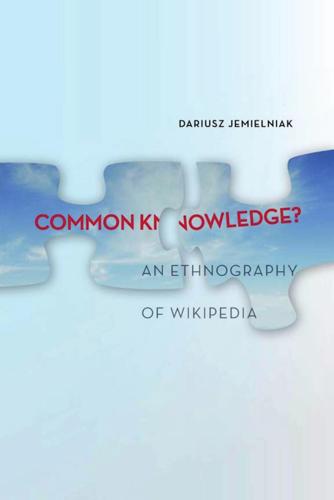
Common Knowledge?: An Ethnography of Wikipedia
by
Dariusz Jemielniak
Published 13 May 2014
This is also perhaps why receiving a barnstar increases the likelihood of getting another one (Restivo & van de Rijt, 2012), as it reduces the risk of endorsing somebody who turns out to be unworthy. Barnstars and other awards have a strong positive social effect; other opencollaboration communities may not exploit rewards to the extent Wikipedians do (Kriplean, Beschastnikh, & McDonald, 2008). All in all, reputation is important on Wikipedia, as it is in the communities of collaborative consumption (Botsman & Rogers, 2010). In addition to informal status building and seeking, as well as identity work, Wikipedia has a system of formal roles, organized in a para- and antihierarchical system, discussed in the next chapter. 2 Formal Roles and Hierarchy A Ca ba l Tha t Rul e s the Wo r ld Wikipedia is full of paradoxes.
…
However, over the last twenty years this approach has been recognized as legitimate and as having its own advantages. A more detailed discussion of methodology is included in Appendix A. 3. Reputation building is also rapidly growing in importance in everyday life because of the increased popularity of collaborative consumption (Botsman & Rogers, 2010). 4. Wikipedias are the most popular projects within the Wikimedia Foundation, but there are many others, such as Wiktionaries, Wikinews, Wikiversities, Wikibooks, and Wikiquotes, all organized on the basis of similar community principles and run from Wikimedia Foundation computer servers.
…
Ethics and power in community-campus partnerships for research. Action Research, 4(1), 9–21. Bossewitch, J., & Sinnreich, A. (2013). The end of forgetting: Strategic agency beyond the panopticon. New Media and Society, 15(2), 224–242. Botsman, R., & Rogers, R. (2010). What’s mine is yours: The rise of collaborative consumption. New York: HarperBusiness. Bourne, D., & Özbilgin, M. F. (2008). Strategies for combating gendered perceptions of careers. Career Development International, 13(4), 320–332. Bowers, J., & Iwi, K. (1993). The discursive construction of society. Discourse and Society, 4(3), 357–393. Braverman, H. (1974).
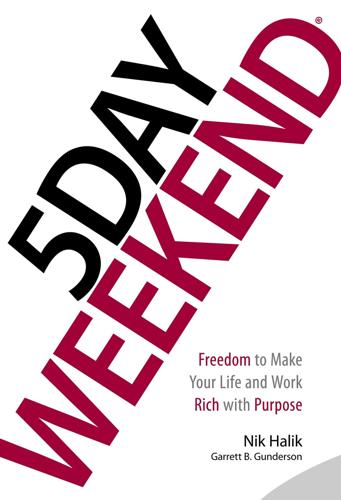
5 Day Weekend: Freedom to Make Your Life and Work Rich With Purpose
by
Nik Halik
and
Garrett B. Gunderson
Published 5 Mar 2018
Take it to the next step. In addition to the domain, also secure social media profiles that match the domain. Then, build out a simple branded website on the domain. Essentially, you are creating and selling pre-built brands and assets to business owners. The Sharing Economy Also referred to as collaborative consumption, the sharing economy is based on people sharing their access to goods and services, and coordinating this sharing via community-based online services. In this new model, people rent beds, cars, boats, and other assets directly from each other instead of owning things themselves or purchasing them from traditional retailers and service companies.
…
Plan Carnegie, Andrew cash flow, and active income and Bank Strategy Cash Flow Index cash-flow recovery method credit score’s effects on and debt and economic cycles and entrepreneurship and failure of conventional investments and Growth investments and lifestyle Passive Income Ratio and Passive Income Score Sheet plugging leaks in and productive expenses and real estate investments and Sharelord Strategy and storage units cash flow filters, and real estate investments Cash Flow Index Cash Flow Insurance Castaneda, Carlos Certificates of Deposit Chamberlain, Jeff Christiansen, Rich Churchill, Winston circadian rhythms. See ultradian rhythms Clason, George S. clutter, and materialism coaching, as entrepreneurial opportunity Coinbase.com collaborative consumption. See sharing economy comfort zones commitment comparisons to others, and materialism consulting, as entrepreneurial opportunity consumerism See also materialism control, and Bank Strategy and debt and entrepreneurship and failure of conventional investments and 5 Day Weekend plan and Growth investments and mindset and Momentum investments and real estate investments and Sharelord Strategy conventional investments, failure of Cooper, Jordan copyrights corporate structure planning, as protective expense covered calls.
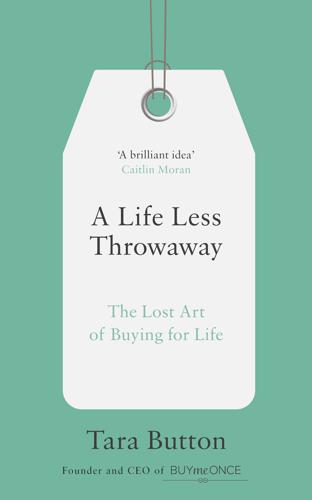
A Life Less Throwaway: The Lost Art of Buying for Life
by
Tara Button
Published 8 Feb 2018
_r=1&hp=&pagewanted=all. 5.Annina Claesson, ‘Using Gamification on Your Online Community Platform: Principles, Examples, and Ideas’, VeryConnect, 28 February 2017, https://www.veryconnect.com/blog/using-gamification-on-your-online-community-platform-principles-examples-and-ideas. 6.https://www.statista.com/statistics/194424/amount-spent-on-toys-per-child-by-country-since-2009/. 7.http://www.which.co.uk/news/2016/11/misleading-black-friday-offers-uncovered-by-which-investigation-455959/. CHAPTER 13: THE BUYMEONCE BUYING GUIDE 1.Cited in Rachel Botsman and Roo Rogers, What’s Mine Is Yours: The rise of collaborative consumption (HarperCollins, 2010). 2.http://www.which.co.uk/reviews/fridge-freezers/article/which-fridge-freezer-brand/most-reliable-fridge-freezer-brands. 3.http://www.which.co.uk/reviews/vacuum-cleaners/article/which-vacuum-cleaner-brand/most-reliable-vacuum-cleaner-brands. 4.https://nrf.com/media/press-releases/halloween-spending-reach-84-billion-highest-survey-history. 5.https://www.yahoo.com/beauty/this-is-how-much-time-the-average-person-spends-214856853.html. 6.http://www.dailymail.co.uk/femail/article-3211309/Women-spend-TWO-YEARS-life-applying-make-splashing-12-000-cosmetics.html. 7.http://www.dailymail.co.uk/femail/article-2188742/How-modern-parents-childrens-demands-buy-latest-toys-gadgets.html. 8.UCLA, ‘A Cluttered Life: Middle-Class Abundance’, episode 1 premiere date: 23 December 2013. 9.http://www.independent.co.uk/news/education/education-news/the-nursery-that-took-all-the-childrens-toys-away-1125048.html.
…
CONCLUSION 1.Victor Papanek, Design for the Real World: Human ecology and social change (Academy Chicago Publishers, 1971, 1985). 2.Bill Watterson, ‘Some Thoughts on the Real World Who Glimpsed It and Fled’ speech given at Kenyon College, Gambier, Ohio, 20 May 1990, http://web.mit.edu/jmorzins/www/C-H-speech.html. 3.www.footprintnetwork.org. 4.https://earthobservatory.nasa.gov/Features/WorldOfChange/decadaltemp.php. 5.Quoted in Andrew Simms, “A cat in hell’s chance” – why we’re losing the battle to keep global warming below 2C’, Guardian, 19 January 2017, https://www.theguardian.com/environment/2017/jan/19/cat-in-hells-chance-why-losing-battle-keep-global-warming-2c-climate-change. 6.http://www.nationalgeographic.com/magazine/2013/09/rising-seas-ice-melt-new-shoreline-maps/ 7.Simms, op. cit. 8.https://www.theguardian.com/environment/2015/dec/02/worlds-richest-10-produce-half-of-global-carbon-emissions-says-oxfam. Further Reading Adams, Douglas, The Hitchhiker’s Guide to the Galaxy (Pan, 1979). Altman, Morris, Handbook of Contemporary Behavioural Economics: Foundations and developments (M. E. Sharpe, 2006). Botsman, Rachel, and Rogers, Roo, What’s Mine Is Yours: The rise of collaborative consumption (HarperCollins, 2010). Brotheridge, Chloë, The Anxiety Solution: A quieter mind, a calmer you (Michael Joseph, 2017). Brown, Derren, Happy: Why more or less everything is absolutely fine (Bantam Press, 2016). Butlin, John, Product Durability and Product Life Extension: Their contribution to solid waste management (OECD, 1982).

Ghost Work: How to Stop Silicon Valley From Building a New Global Underclass
by
Mary L. Gray
and
Siddharth Suri
Published 6 May 2019
Office of the Assistant Secretary for Administration and Management, United States Department of Labor website. Originally published in Monthly Labor Review, June 1978. https://www.dol.gov/oasam/programs/history/flsa1938.htm. Hamari, Juho, Mimmi Sjöklint, and Antti Ukkonen. “The Sharing Economy: Why People Participate in Collaborative Consumption.” Journal of the Association for Information Science and Technology, 2015. Hamill, Jasper. “Elon Musk’s Fears of AI Destroying Humanity Are ‘Speciesist’, Said Google Boss.” Metro, May 2, 2018. https://metro.co.uk/2018/05/02/elon-musks-fears-artificial-intelligence-will-destroy-humanity-speciesist-according-google-founder-larry-page-7515207/.
…
Arun Sundararajan, The Sharing Economy: The End of Employment and the Rise of Crowd-Based Capitalism (Cambridge, MA: MIT Press, 2016); Airi Lampinen et al., “Studying the ‘Sharing Economy’: Perspectives to Peer-to-Peer Exchange,” in Proceedings of the 18th ACM Conference Companion on Computer Supported Cooperative Work & Social Computing (New York: ACM, 2015), 117–21, https://doi.org/10.1145/2685553.2699339; Juliet Schor, “Debating the Sharing Economy,” Great Transition Initiative, October 2014, http://www.greattransition.org/publication/debating-the-sharing-economy; Schor et al., “Paradoxes of Openness and Distinction in the Sharing Economy,” Poetics 54 (2016): 66–81. [back] 14. Kristofer Erickson and Inge Sørensen, “Regulating the Sharing Economy,” Internet Policy Review 5, no. 3 (June 30, 2016), https://doi.org/10.14763/2016.2.414; Juho Hamari, Mimmi Sjöklint, and Antti Ukkonen, “The Sharing Economy: Why People Participate in Collaborative Consumption,” Journal of the Association for Information Science and Technology, 2015; Aaron Smith, Shared, Collaborative, and On Demand. [back] 15. “We believe the new economy is creating opportunities to reinvent work, but we need to ensure the end goal is work that is good for workers.” National Domestic Workers Alliance, “The Good Work Code for the Online Economy Announces First 12 Companies Leading for Good for Workers,” press release, November 13, 2015, via Marketwired, http://www.marketwired.com/press-release/good-work-code-online-economy-announces-first-12-companies-leading-good-work-workers-2073469.htm.
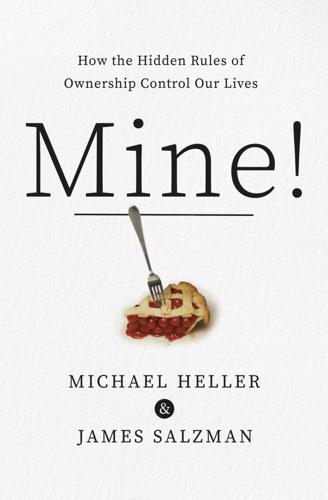
Mine!: How the Hidden Rules of Ownership Control Our Lives
by
Michael A. Heller
and
James Salzman
Published 2 Mar 2021
And more often than not, people don’t want either the drill or the hole. They want the curtains hung and the IKEA dresser assembled. TaskRabbit figured out it could provide that useful combination, sending you both the drill and the person who would finish the project. There’s no shortage of names for these new markets—“collaborative consumption,” the “gig economy,” the “peer economy.” There has been no end of breathless predictions for where it will lead: “A startling number of young people, it turns out, have begun to question one of the central tenets of American culture: ownership.” And at least in theory, it’s a promising development.
…
Penner, “The ‘Bundle of Rights’ Picture of Property,” UCLA Law Review 43 (1996): 711–820. “a non-exclusive, non-transferable”: “Amazon Prime Video Terms of Use,” Prime Video, accessed June 1, 2020. “In the grimmest version”: Jacob Brogan, “What’s the Future of Ownership?,” Slate, October 3, 2016. “How many of you own”: Rachel Botsman, “The Case for Collaborative Consumption,” TedxSydney, May 2010. “ten ideas that will”: Bryan Walsh, “Today’s Smart Choice: Don’t Own. Share,” Time, March 17, 2011. “The iPhone helped”: Ben Tarnoff, “The Future: Where Borrowing Is the Norm and Ownership Is Luxury,” Guardian, October 17, 2016. “slices”: Lee Anne Fennell, Slices and Lumps: Division and Aggregation in Law and Life (Chicago: University of Chicago Press, 2019).

The Fourth Industrial Revolution
by
Klaus Schwab
Published 11 Jan 2016
In addition, they are available at a moment’s notice. The sharing economy has any number of ingredients, characteristics or descriptors: technology enabled, preference for access over ownership, peer to peer, sharing of personal assets (versus corporate assets), ease of access, increased social interaction, collaborative consumption and openly shared user feedback (resulting in increased trust). Not all are present in every “sharing economy” transaction. Positive impacts – Increased access to tools and other useful physical resources – Better environmental outcomes (less production and fewer assets required) – More personal services available – Increased ability to live off cash flow (with less need for savings to be able to afford use of assets) – Better asset utilization – Less opportunity for long-term abuse of trust because of direct and public feedback loops – Creation of secondary economies (Uber drivers delivering goods or food) Negative impacts – Less resilience after a job loss (because of less savings) – More contract / task-based labour (versus typically more stable long-term employment) – Decreased ability to measure this potentially grey economy – More opportunity for short-term abuse of trust – Less investment capital available in the system Unknown, or cuts both ways – Changed property and asset ownership – More subscription models – Less savings – Lack of clarity on what “wealth” and “well off” mean – Less clarity on what constitutes a “job” – Difficulty in measuring this potentially “grey” economy – Taxation and regulation adjusting from ownership/sales-based models to use-based models The shift in action A particular notion of ownership underlies this development and is reflected in the following questions
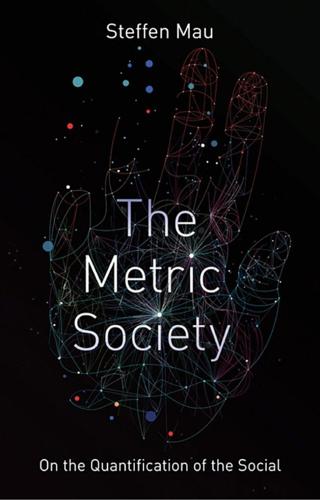
The Metric Society: On the Quantification of the Social
by
Steffen Mau
Published 12 Jun 2017
Habermas, Jürgen (2007) The Theory of Communicative Action, 2 vols., trans. Thomas McCarthy, Cambridge: Polity. Haffert, Lukas (2016) Die Schwarze Null. Über die Schattenseiten ausgeglichener Haushalte, Berlin: Suhrkamp. Hamari, Juho, Mimmi Sjöklint and Antti Ukkonen (2015) ‘The sharing economy: why people participate in collaborative consumption’, Journal of the Association for Information Science and Technology 67/9 (pp. 2047-59). Han, Byung-Chul (2015) The Burnout Society, trans. Erik Butler, Stanford Briefs, an imprint of Stanford University Press. Han, Byung-Chul (2017) Psychopolitics: Neoliberalism and New Technologies of Power, trans.
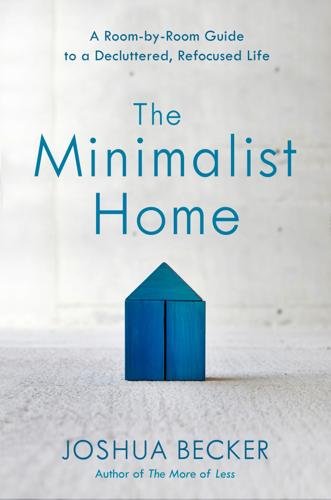
The Minimalist Home: A Room-By-Room Guide to a Decluttered, Refocused Life
by
Joshua Becker
Published 18 Dec 2018
Gladiator GarageWorks, “Almost 1 in 4 Americans Say Their Garage Is Too Cluttered to Fit Their Car,” Cision, June 9, 2015, www.prnewswire.com/news-releases/almost-1-in-4-americans-say-their-garage-is-too-cluttered-to-fit-their-car-300096246.html. 7. Mike Allen, “How to Dispose of Hazardous Waste,” Popular Mechanics, March 28, 2006, www.popularmechanics.com/cars/how-to/a329/2063646/. 8. Rachel Botsman and Roo Rogers, What’s Mine Is Yours: The Rise of Collaborative Consumption (New York: HarperCollins, 2010), 83. 9. Ashley Whillans, quoted in Niraj Chokshi, “Want to Be Happy? Buy More Takeout and Hire a Maid, Study Suggests,” New York Times, July 27, 2017, www.nytimes.com/2017/07/27/science/study-happy-save-money-time.html. 10. United States Census Bureau, “Historical Census of Housing Tables,” www.census.gov/hhes/www/housing/census/historic/units.html. 11.

Discardia: More Life, Less Stuff
by
Dinah Sanders
Published 7 Oct 2011
Give yourself credit for saving money and saving energy by reusing. Comparison-shop between new furniture and antiques. My Ikea office cabinet and beautiful 1920s armoire weren't very different in price, but the latter gets much more active use in its place of honor in the living room. We are in the midst of a cultural shift from consumerism back to collaborative consumption with services like car sharing and projects like Neighbor Goods blossoming all around the country. Whatever you choose, remember that you have a lot of options beyond what is advertised. Scratch the going-out itch in a less expensive way. Want to visit that pricy restaurant, but it's outside your budget?
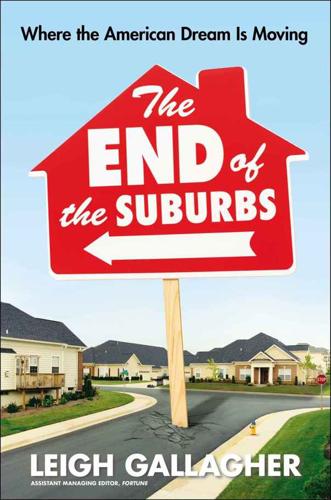
The End of the Suburbs: Where the American Dream Is Moving
by
Leigh Gallagher
Published 26 Jun 2013
Home size has decreased over the past few years, while movements like the “Not So Big House,” which focuses on building slightly smaller homes that offer greater function and higher quality, and “LifeEdited,” which preaches the reduction of posessions, have gained traction. The rise of so-called collaborative consumption, meanwhile, has popularized the mass sharing of cars, homes, clothes, and more. All of these philosophies run counter to the acquisitive lifestyle of suburbia and signal a powerful shift in the consumer zeitgeist. Less is now more. The suburbs were poorly designed to begin with. While older suburbs were built on a different model, the modern-day American suburbs were designed in a way that went counter to thousands of years of planning theory.
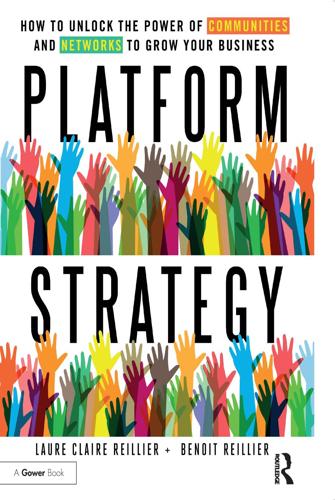
Open for Business Harnessing the Power of Platform Ecosystems
by
Lauren Turner Claire
,
Laure Claire Reillier
and
Benoit Reillier
Published 14 Oct 2017
In the meantime, and irrespective of market volatility, it is interesting to see overall patterns of value creation around platform businesses. The meteoric rise of platform businesses 19 16 See early definitions of the sharing economy in R. Botsman and R. Rogers, What’s Mine Is Yours: The Rise of Collaborative Consumption, New York: Harper Business, 2010. More recently, A. Stephany, The Business of Sharing, London: Palgrave Macmillan, 2015. 17 www.justpark.com/creative/sharing-economy-index/, February 2016. Chapter 3 What is a platform business? Narrowing the search: platform definitions The very definition of what is a platform business is fraught with difficulty.

The Autonomous Revolution: Reclaiming the Future We’ve Sold to Machines
by
William Davidow
and
Michael Malone
Published 18 Feb 2020
The transformation that will take place in other service businesses with high information proxy content will be similar. A SHARED FUTURE Many of the most disruptive new business models will emerge in what has been called the sharing economy. Information equivalence is the primary driving force behind the sharing economy, which is also known as the shareconomy, collaborative consumption, collaborative economy, or peer economy. All of these terms are used to describe a broad range of economic activities.40 Arun Sundararajan does an excellent job of characterizing this phenomenon in his book, The Sharing Economy.41 The sharing economy, he writes, is market based and facilitates the efficient exchange and sharing of goods, services, and human skills.

Peers Inc: How People and Platforms Are Inventing the Collaborative Economy and Reinventing Capitalism
by
Robin Chase
Published 14 May 2015
When you can connect and share assets, people, and ideas, everything changes, not just how you rent a car. Google, eBay, Facebook, OKCupid, YouTube, Waze, Airbnb, WhatsApp, Duolingo—all are part of this transformation of capitalism. Web 2.0, the sharing economy, crowdsourcing, collaborative production, collaborative consumption, and network effects are simply terms we’ve created along the way in an effort to capture what is going on. Attributing all this to “the Internet” misses the building blocks and therefore the ability to replicate this type of activity in a more controlled way. There is one structure that underlies all these—excess capacity + a platform for participation + diverse peers—and it is fundamentally changing the way we work, build businesses, and shape economies.

Street Smart: The Rise of Cities and the Fall of Cars
by
Samuel I. Schwartz
Published 17 Aug 2015
“Physical Fitness and All-Cause Mortality: A Prospective Study of Healthy Men and Women.” Journal of the American Medical Association 262, no. 17 (November 1995): 2395–2401. Boarnet, M.G., et al. “Retrofitting the Suburbs to Increase Walking.” Urban Studies 48, no. 1 (2011): 129–159. Botsman, Rachel, and Roo Rogers. What’s Mine Is Yours: The Rise of Collaborative Consumption. New York, NY: HarperCollins, 2010. Branson-Potts, Hailey. “Making Pasadena’s Colorado Boulevard a Haven for Pedestrians.” Los Angeles Times, January 20, 2014. Bullard, Robert D. “Addressing Urban Transportation Equity in the United States.” Fordham Urban Law Journal 31, no. 5 (2003): 1183–1209.
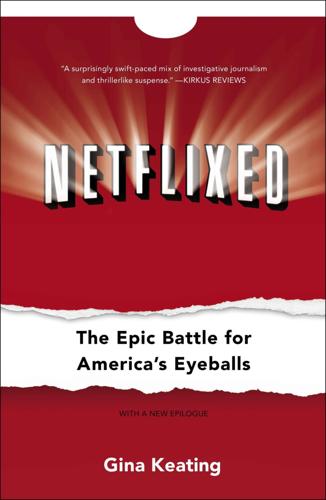
Netflixed: The Epic Battle for America's Eyeballs
by
Gina Keating
Published 10 Oct 2012
But Keyes still had not caught on to consumers’ impatience with being told how and when to watch movies: Blockbuster OnDemand charged $1.99 for movie rentals and gave renters twenty-four hours to watch the movie once they pressed play. The rental expired after thirty days even if the customer never watched it. • • • WHEN THE RECESSION derailed the U.S. economy in late 2008, Netflix found itself well-positioned to take advantage of new trends in collaborative consumption. Customers stayed home and turned to Netflix for cheap entertainment and got hooked on a growing number of devices that could suddenly stream videos—game consoles, cell phones, DVD players. The Netflix application was everywhere, and consumers signed up at a rate of ten thousand per day in late 2008 and early 2009.
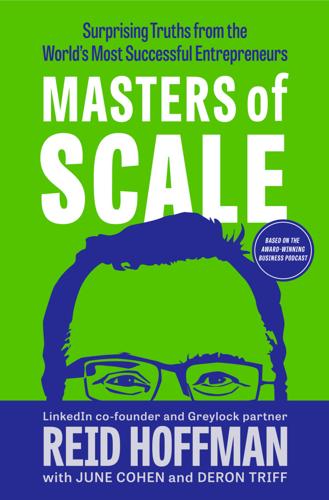
Masters of Scale: Surprising Truths From the World's Most Successful Entrepreneurs
by
Reid Hoffman
,
June Cohen
and
Deron Triff
Published 14 Oct 2021
LinkedIn is one of those, and so is Airbnb. There were some signs of demand for Airbnb, in that there were a lot of young people who wanted to travel, and needed to do it cheaply, and were happy to sleep on someone’s couch; “couch surfing” was a thing. And there was also a trend at the time toward collaborative consumption—with companies like ZipCar pioneering shared car ownership. But the idea of renting someone else’s room in their apartment for a night—that was definitely new. The translation of patterns into business ideas is at the core of what it means to be an entrepreneur. And no matter how quickly you translate those patterns into ideas, chances are other people will be doing the same thing.
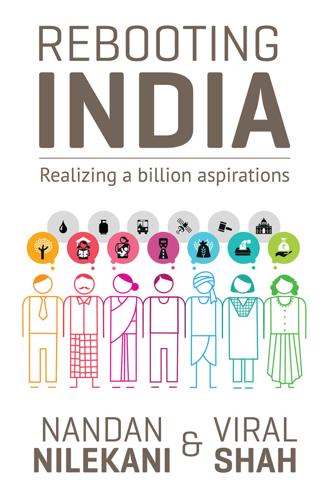
Rebooting India: Realizing a Billion Aspirations
by
Nandan Nilekani
Published 4 Feb 2016
Prof. Ajay Shah’s blog. (Professor, National Institute of Public Finance and Policy). http://ajayshahblog.blogspot.in/2014/12/policy-puzzles-of-digital-nirvana.html 8. 9 March 2013. ‘All eyes on the sharing economy’. Economist. http://www.economist.com/news/technology-quarterly/21572914-collaborative-consumption-technology-makes-it-easier-people-rent-items 9. 29 December 2014. ‘There’s an app for that’. Economist. http://www.economist.com/news/briefing/21637355-freelance-workers-available-moments-notice-will-reshape-nature-companies-and 10. Kaka, Noshir, Madgavkar, Anu, Manyika, James, Bughin, Jacques, and Parameswaran, Pradeep.

The Industries of the Future
by
Alec Ross
Published 2 Feb 2016
s=H; “#1006 Brian Chesky,” “The World’s Billionaires,” Forbes, http://www.forbes.com/profile/brian-chesky/. At the conclusion of Chesky’s creation: Steven T. Jones, “Forum Begins to Bridge the Housing-Transportation Divide,” San Francisco Bay Guardian, October 10, 2014, http://www.sfbg.com/politics/2013/04/24/hype-reality-and-accountability-collaborative-consumption. At last measure, the estimated size: Sarah Cannon and Lawrence H. Summers, “How Uber and the Sharing Economy Can Win Over Regulators,” Harvard Business Review, October 13, 2014, https://hbr.org/2014/10/how-uber-and-the-sharing-economy-can-win-over-regulators/; TX Zhuo, “Airbnb and Uber Are Just the Beginning: What’s Next for the Sharing Economy,” Entrepreneur, March 25, 2015, http://www.entrepreneur.com/article/244192.
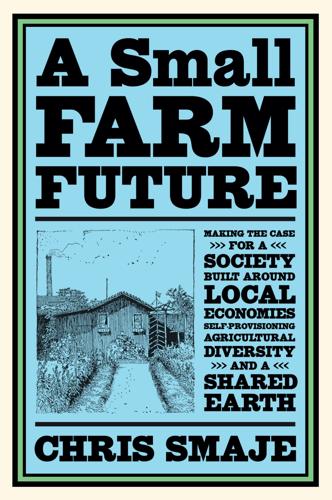
A Small Farm Future: Making the Case for a Society Built Around Local Economies, Self-Provisioning, Agricultural Diversity and a Shared Earth
by
Chris Smaje
Published 14 Aug 2020
A good deal of effort in the alternative farming and alternative economics movements dedicates itself to opening out that concentrated middleman sector, for example by supporting direct farmer-to-customer retailing or wholesale co-operatives that don’t disproportionately extract value from producers. A second strand of economic thinking focuses on the tech revolution that’s creating new and more distributed forms of peer-to-peer ‘collaborative consumption’ or ‘collaborative commons’ such as Airbnb and open source industrial design.30 I happily endorse the first of these trends, and remain sceptical about the second, but the small farm society I envisage represents a more radical break with the status quo than replacing corporate supermarkets with farmers’ markets or tech platforms.
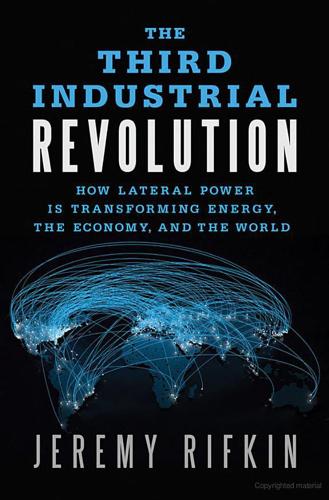
The Third Industrial Revolution: How Lateral Power Is Transforming Energy, the Economy, and the World
by
Jeremy Rifkin
Published 27 Sep 2011
Retrieved March 29, 2011, from http://www.economist.com/node/18114221?story_id=18114221. 21.Ibid. 22.Etsy Lets Artists Create a Living. (2008, July 1). Rare Bird, Inc. Retrieved from http://www.rarebirdinc.com/news/articles/etsy.html. 23.Botsman, R., & Rogers, R. (2010). From Generation Me to Generation We. In What’s Mine Is Yours: The Rise of Collaborative Consumption. New York: HarperBusiness, p. 49; Kalin, R. (2011, March 28). Etsy—Speaking Engagement Request [E-mail to the author]. 24.Microfinance and Financial Inclusion. (2010, December 19). Financial Times. Retrieved from http://www.ft.com/cms/s/0/cc076c20-0b99-11e0-a313-00144feabdc0.html#axzz1EoWZY7ga. 25.At a Glance, December, 2010.
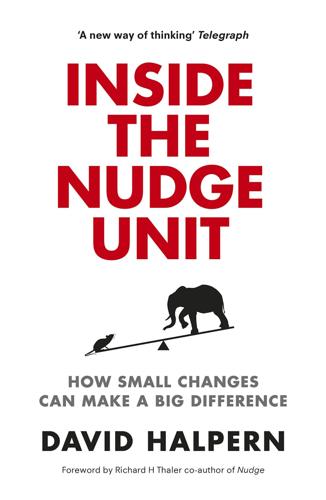
Inside the Nudge Unit: How Small Changes Can Make a Big Difference
by
David Halpern
Published 26 Aug 2015
School gates, as the internet social entrepreneur Tom Steinberg once observed, create a natural environment for parents to gather and get to know each other, and we should make this a virtue, not just an accident. Streets and buildings can be designed to create spaces where residents can pause and gather. Street parties can be made easy. Communities and activists can organise ‘neighbourhood directories’ of residents’ interests.30 Technology can lower the barriers to collaborative consumption so that we don’t all need to buy a ladder or a drill that we only use once a year. More importantly, it can lower the barriers and intrusiveness to helping our elderly neighbours, or even just organising a football kick-around for the kids on the street. The data suggest that our well-being is also boosted by access to the natural environment.

The Upstarts: How Uber, Airbnb, and the Killer Companies of the New Silicon Valley Are Changing the World
by
Brad Stone
Published 30 Jan 2017
She then won Chesky’s trust, in part by enthusiastically embracing the company’s sense of its own virtue, its near religious certainty of its position in the vanguard of a historic new sharing economy that could change the world. The Airbnb that Johnson joined full-time as general counsel in December 2011 was almost irrationally consumed with its own identity. Employees avidly read and discussed the newly published book What’s Mine Is Yours: The Rise of Collaborative Consumption, by Rachel Botsman and Roo Rogers, which theorized that the twenty-first century was not about individual purchasing habits or the conventional idea of owning things but about internet communities, online reputations, and the efficient sharing of underutilized resources. Execs spent months hashing out the company’s six core values—“Be a host,” “Every frame matters,” “Simplify,” “Embrace the adventure,” “Be a ‘cereal’ entrepreneur,” and “Champion the mission.”

Digital Disconnect: How Capitalism Is Turning the Internet Against Democracy
by
Robert W. McChesney
Published 5 Mar 2013
What Is the Elephant in the Digital Room? 1. Discussed in David Weinberger, Too Big to Know (New York: Basic Books, 2011), 7. 2. Eli Pariser, The Filter Bubble: What the Internet Is Hiding from You (New York: Penguin, 2011), 11. 3. Rachel Botsman and Roo Rogers, What’s Mine Is Yours: The Rise of Collaborative Consumption (New York: Harper Business, 2010), xiv; Peter H. Diamandis and Steven Kotler, Abundance: The Future Is Better Than You Think (New York: The Free Press, 2012), 282. 4. Nicholas Carr, The Shallows: What the Internet Is Doing to Our Brains (New York: W.W. Norton, 2010), 9–10, 87. 5. Cited in Jeffrey D.
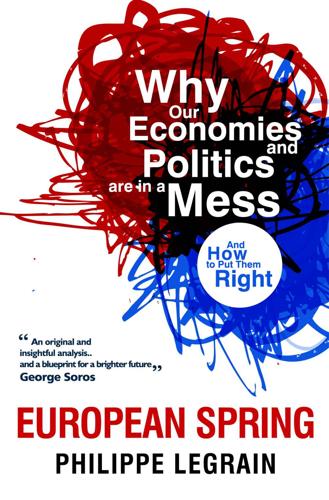
European Spring: Why Our Economies and Politics Are in a Mess - and How to Put Them Right
by
Philippe Legrain
Published 22 Apr 2014
In France, La Machine du Voisin even allows people to rent out the use of their washing machine.555 Such peer-to-peer rental schemes make better use of an economy’s assets, provide extra income for their owners and are often cheaper and more convenient for borrowers. Just find somewhere nearby with your smartphone, check out the reviews and pay online: simple. Or at least it should be. Unfortunately, vested interests and bureaucratic regulation sometimes impede collaborative consumption. Taxes can be prohibitive. Amsterdam requires people to obtain a permit to rent out their place. Hotel groups lobby for their stringent health and safety regulations to be applied to private rentals: just think of the prohibitive cost and inconvenience of fitting a fire exit to your flat.

Empire of Things: How We Became a World of Consumers, From the Fifteenth Century to the Twenty-First
by
Frank Trentmann
Published 1 Dec 2015
Compare: Irmi Seidl and Angelika Zahrnt (eds), Postwachstumsgesellschaft: Konzepte für die Zukunft (Marburg, 2010). 2. See now, Emily Watson, Seneca: A Life (London, 2015). 3. Joseph E. Stiglitz, The Great Divide (London, 2015). 4. Rachel Botsman and Roo Rogers, What’s mine is yours: the rise of collaborative consumption (New York, 2010); B. Joseph Pine and James H. Gilmore, The experience economy (Boston, Mass., 1999); Jon Sundbo and Flemming Sørensen (eds), Handbook on the experience economy (Cheltenham, 2013); Juliet Schor, Plenitude: the new economics of true wealth (New York, 2010). See also now the overviews by Juliet Schor and Connor Fitzmaurice, ‘Collaborating and connecting’ and by Maurie J.